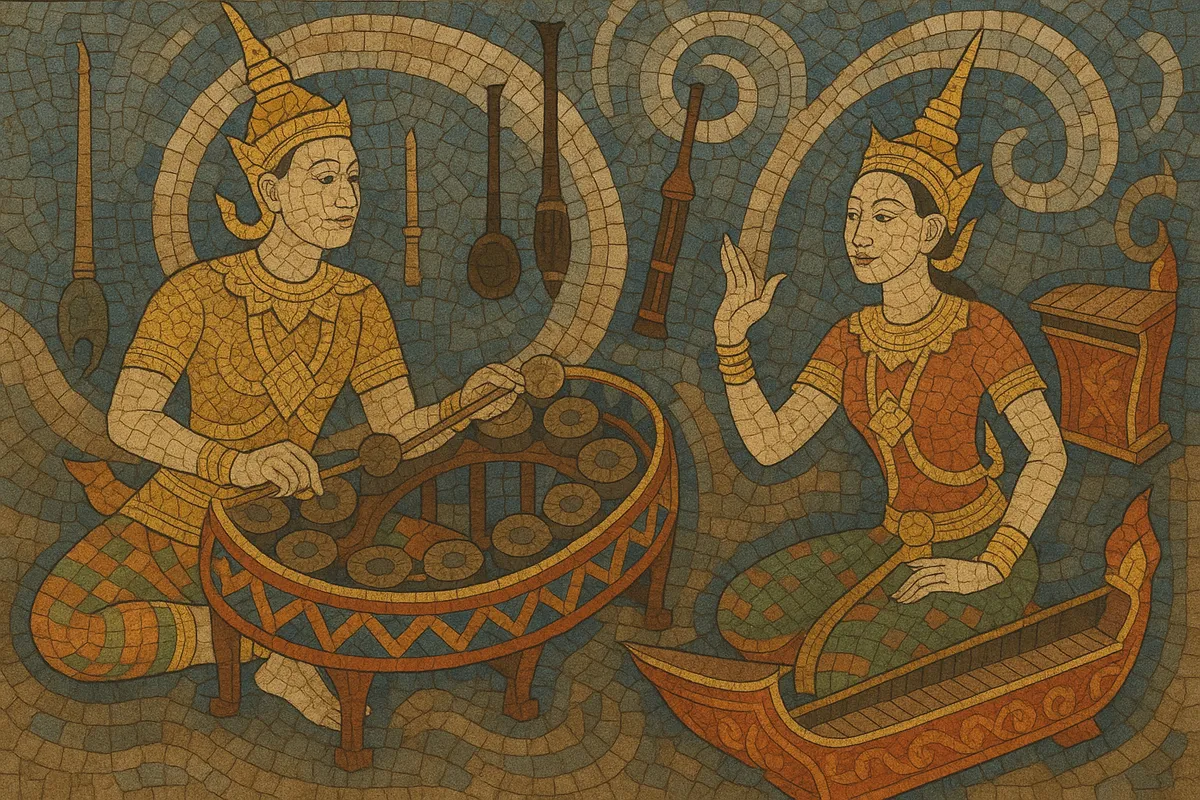Thai classical is the courtly and theatrical art music of Thailand, crystallizing in the Sukhothai and Ayutthaya kingdoms and flourishing in Bangkok’s Rattanakosin era. It is performed by standardized ensembles (piphat, khruang sai, and mahori) that accompany classical dance-drama (khon, lakhon), rituals, and concerts.
The music features a seven-tone, roughly equidistant heptatonic tuning, heterophonic textures (each instrument elaborating the same core melody at different densities), and cyclic rhythms articulated by small cymbals (ching) and drums (taphon, klawng). Signature timbres include the pi nai (quadruple-reed oboe), wooden xylophones (ranat ek/thum), gong-circles (khong wong yai/lek), spike fiddles (saw duang, saw u, saw sam sai), the hammered dulcimer (khim), the zither (jakhe), and flutes (khlui).
Repertoire consists of named pieces and suites (thao) performed at three structural tempo levels (sam chan → song chan → chan diao), moving from expansive elaboration toward concise, driving climaxes.
Thai classical music coalesced between the 13th and 18th centuries, drawing on older Mainland Southeast Asian gong–chime traditions and court cultures. By the Ayutthaya period, ensembles and repertories recognizable as Thai were in place, shaped by exchange with Khmer pinpeat, Mon and Lao traditions, Burmese court music, and long-standing links to Indian and Chinese musical thought.
After the fall of Ayutthaya in 1767, the Thonburi and early Rattanakosin courts rebuilt and expanded the tradition. Ensemble families (piphat for winds/percussion and theater, khruang sai for strings and chamber contexts, and mahori for mixed, elegant settings with voice) became standardized. Performance practice emphasized heterophony, cyclic rhythm marked by ching patterns, and a three-tier formal pacing (sam chan → song chan → chan diao). Canonical pieces and suites (thao) were curated and transmitted orally.
Contact with Western music in the 19th–20th centuries introduced notational experiments and institutional patronage, but the core idiom remained intact. Influential figures—such as Luang Pradit Phairoh (Sorn Silapabanleng), Montri Tramote, Prince Paribatra Sukhumbandh, and Phra Chen Duriyanga (Peter Feit)—composed, arranged, taught, and helped document the repertoire. The Fine Arts Department and university ensembles became key guardians.
Today, Thai classical thrives in conservatories, universities, and state ensembles, and accompanies classical dance-drama, ceremonies, and concerts. Artists continue to teach the oral tradition while engaging carefully with new media and cross-cultural projects, ensuring continuity of tuning, texture, and form even in modern contexts.


